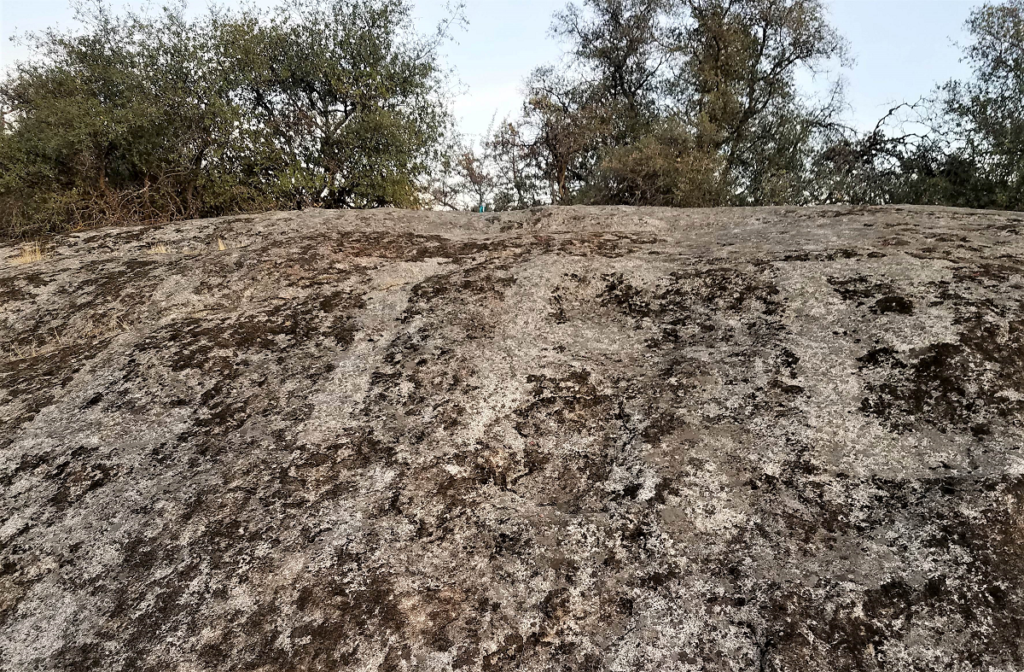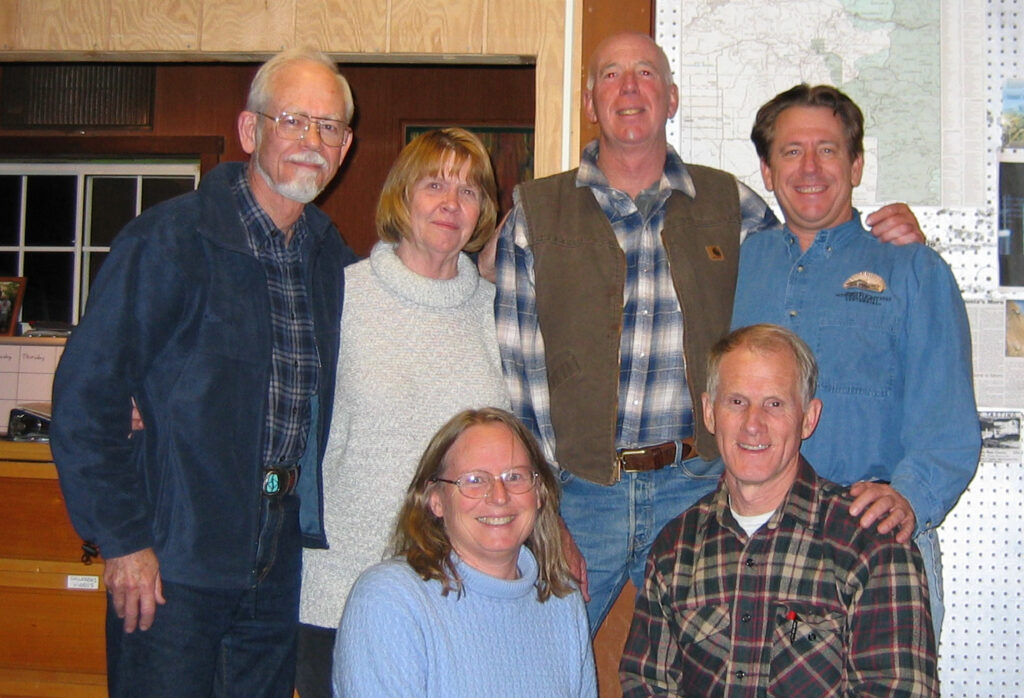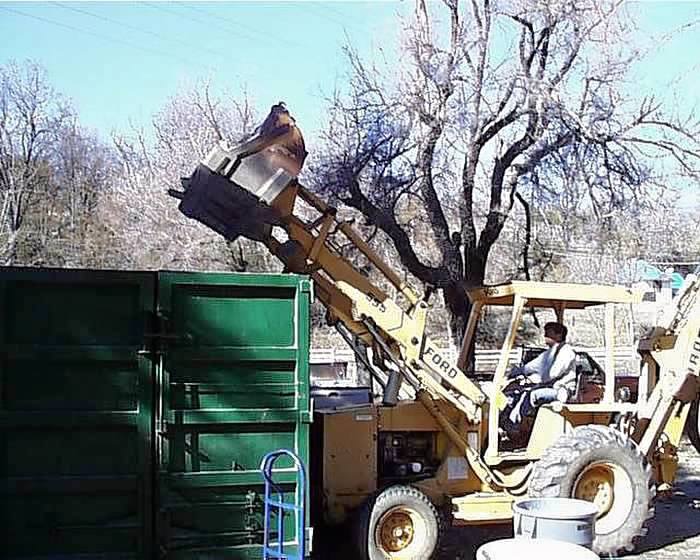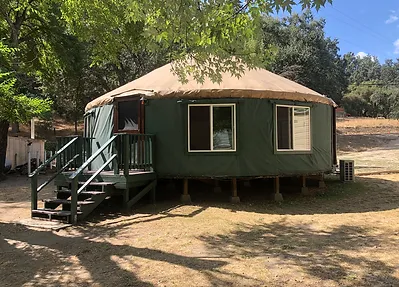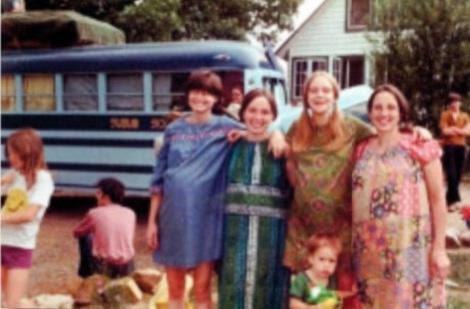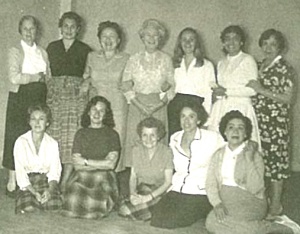Following are remembrances provided by Paul Edwards, Lusijah Rott, Amelia Williams, and Rachmart Martin. There are many other Subud members who may have experiences or memories of events at Seven Circles which they would like to share.
All encouraged to do share their stories using the “Comment” box at the end of this article.
A Remembrance by Paul Edwards
I have had the opportunity to be actively engaged for the entire 20-year plus history of the Seven Circles Project. I joined the Seven Circles Board of Directors in the second year and have been an active director ever since, even when living in Vancouver, BC, serving as Board Chair for the last 10 years.
I was on the first committee to help create a Regional Center and was also Chair of Subud Los Angeles when we finally decided on the property. I was very active working with Halfrid Nelson to find the equipment for the kitchen and to find and transport all the beds for the nine guest rooms. I also chaired the Capital Campaign to raise the money to upgrade the guest rooms. We raised $300,000 in that successful campaign to remodel all the ensuite bathrooms.
In 2005, when the Regional Council realized that SCR was serious about buying it they became aware that, if successful, the Seven Circles property might appreciate a lot in value and the Region would have no benefit from that. So, at a Regional meeting in Sacramento, I proposed that if SCR ever sold Seven Circles, the first $50,000 of the profits of the sale would go to Subud California. I talked our other Directors into this idea during a dinner break and then proposed it to the Regional Council when we reconvened. The members of the Regional Council loved the idea, so it was put in the new Seven Circles Bylaws.
Looking back, I feel that taking on ownership of Seven Circles from the Region was the right decision. Despite challenges here and there over the years to grow Seven Circles as a Retreat Center, we have been successful overall for more than 20 years. Seven Circles’ history has been a long and winding road, but I think I can say that the founders of Seven Circles (including some who have already passed away) feel that we have achieved the visions and dreams that we had for our project.
A Remembrance by Lusijah Darrow (formerly Rott)
The establishment of a Subud owned property that could be used for our own meetings and gatherings was not a new idea. It was a fortunate confluence that this vision drew those with the same goal or idea, including foremost Sharif and Sulfiati Harris. There are so many people to whom I feel great gratitude for their efforts to make this center a reality. You all know who you are. Deep love to you with the hopes that you will be blessed for your tireless commitment.
Others have accurately described the history. I would like to talk about the original vision. My internal impulse was that we have this incredible gift of the Latihan, but as a group were and remain introverted and thus invisible. I felt that the establishment of such a center, in addition to providing meeting space for our gatherings, could also be a place for members to use their talents and abilities to do good works for others. We all do whatever work we do, and I believe many or most feel the importance of the gift of the Latihan in how we work, but it is just people acting independently. As a person who worked in biomedical research, I saw the metaphor of the quantum leap between what single cells can do versus what an organ (or organism) with many, many cells working together can do. There is much bigger scope and capacity on organic level to perform a bigger function.
I saw this center might bring the fruits of the Latihan into broader interaction with the larger community. The center would be Subud, we would have a place that could become a reflection of the practice we have. For me, there was always a big hope that anyone coming into this sacred space would be touched in a profound way, that would help them connect more deeply with Spirit. In my feeling, this goal to start a center served both the primary goals of Subud, creating a space for our own practice and also in line with the goals of Susila Dharma as a public benefit entity.
As this vision was coming into focus, Sulfiati and I were at Bapak’s centennial. I had some powerful experiences during this time in Cilandak, which remain close to me to this day. Among the most important was seeing Bapak in one of the latihans, seeing his smile, feeling the warmth of his approval.
In retrospect, did we accomplish our goals? In part. My vision was that Seven Circles Retreat would always operate as both a Subud center and as a business. I was personally extremely disappointed when the San Joaquin Valley Subud Center stopped meeting regularly at Seven Circles. I also honor the work of the directors, after I needed to step away, to sustain this jewel of a place. I feel that even with the disconnect from the direct linkage with Subud, people who came to retreats at Seven Circles benefited. I feel good about the hand-off to the new owners, who seem to honor our intentions and to continue to maintain this little place as a sacred and precious space.
A Remembrance by Sulfiati Harris
The Seven Circles project was a long saga for the Harrises. We were the first Subud members to move up to this area to help get the project started. I remember coming up here by myself during Ramadan and being met by a Hare Krishna devote, Madon Snell. He knew what fasting was, and how hard it is, and met me there with food. A deeply kind man, and I am so glad it is being sold to someone from that community.
This long saga was marked for me by extremes of happiness and sadness. The beginning was exhilarating. So many of us from all over California came to help transform this old motel, stripping out walls, putting in new wiring and plumbing, excavating pipes with a backhoe, scrubbing and painting and repairing the pool. And wonderful latihans, of course. However, selling the project to Subud California unleashed a torrent of upset and of course this was hard for me.
Here is what I learned: I should never invest so much of my inner life into a project that involves money, especially other people’s money. A project is something on the material level. It is not the Latihan and shouldn’t have a spiritual investment. When I was removed from the project it created a deep internal crisis within me because I had allowed myself to identify with it too deeply.
Now, two decades later, here are some other thoughts about Subud in the world. To me Subud and the Latihan are extraordinary. This contact is one of the ways that can help mankind evolve to a higher level of harmony and open humanity to new vistas. But this will not happen quickly. It is an evolutionary process. Deep changes don’t happen all at once.
Did we meet our spiritual goals? I think we did. Those Subud people who moved here during and after the founding of Seven Circles have been part of the community for a long while and they have enriched it in many ways. I was able to start another community project in 2019 with Amelia Williams at the site of a beautiful K-8 school just up the road in Badger. For this one, all the doors were thrown open for the project. The property was owned by a school district in Tulare County. They are happy to have it open, cared for, and serving the whole community. We have a 5-year lease to a beautiful facility for a tiny amount a year because the school district wants it to be used for the community. I do want to note that we do not do Latihan there, though Latihan is what provided the spark for the community to come together and fostered its development.
This is all part of the continuum that was started by the “flag in the ground” that was planted by Seven Circles. It seems miraculous to me!
A Remembrance by Rachmat Martin
The establishment of a Subud owned property that could be used by and for Subud Regional, National and sub-groups of the World Subud Family was an idea carried in the hearts of many Subud members for decades. Locating a suitable, available and affordable property became a major objective during the Subud California Regional Congress in 2002 and then under the Administration of the newly elected Committee in 2003 under the leadership of Lusijah Darrow (formerly Rott) as Chairwoman and Sulfiati Harris as Vice Chair.
A search was initiated and with significant help by Sulfiati’s brother Marwan LoMele, a venue that became known as Seven Circles was located in the Sierra foothills town of Badger, approximately midway between LA and San Francisco. These early founders of a Subud California’s retreat center all lived at least a four hours’ drive from Badger. Prior to finding the Seven Circles site, many others including myself would travel to various locations to visit sites for sale that seemed might fit the parameters of suitability, availability and affordability. Thus, we all became road warriors!
In early 2003, Marwan LoMele identified this old motel that was under bank ownership following a foreclosure. The history of the motel began in the early 1900’s and became known as The Life of Riley, a feature emblazoned onto the huge granite outcropping in the south upper ridge of the property. It can still be seen from Hwy 245 which runs past the front entrance of the retreat center and is one of the gateways to Sequoia/Kings Canyon National Park. A Badger Subud community began to form as Marwan found affordable houses to buy for himself, the Harris’s and his brother Bachrun. Joshua Horst simultaneously purchased a large ranch across the street from the Hare Krishna community.
A financial arrangement was reached by Lusijah and Sulfiati and title was passed from the bank to Subud California. The Regional Council created a management board and appointed myself and Joshua Horst as board members with myself as Chair. Sulfiati and Lusijah wrestled with the various points of view throughout the Region on whether this project should be under the auspices of Subud California or whether it should be a separate entity. In the meantime, Joshua and I hired a capable contractor who lived nearby to take on the remodeling of the somewhat decrepit guest rooms and kitchen. We were fortunate to find many capable skilled workers among the Hare Krishna community. Joshua, living nearby, was the primary site improvement overseer.
I helped organize a team of Subud volunteers along with some paid help to reconstruct the old water system from the well into the lodge and guest rooms. Due to the large amount of time required to continue being an active board member, I eventually recruited Paul Edwards to join the Board and assume the role as Chair. At that point I retired from Board service for about 12 years. Paul then lived in Los Angeles so he also began somewhat regular trips to Badger. Sulfiati and Lusijah were stressed to their noble limits in the effort to achieve a 50% buy-in by the Centers of the Region and in stepped Doug Card with the concept of establishing a 501 (C) 3 to raise money primarily from a small number of highly committed and dedicated Subud members in the region.
Lusijah, Sulfiati and Paul have described much of this history. During the effort by Lusijah and Sulfiati to bring enough California Centers on board to purchase the opportunity, Lusijah and Paul requested Marwan to help create a video history of what was then unfolding and this video has been saved and achieved and can be seen HERE. Featured in the video is the original music of Hamid Camp composed in honor of Bapak and called Seven Circles. I urge everyone to watch the short video and hear Hamid’s beautiful music.
As Lusijah has written, she saw the metaphor of the quantum leap between what single cells can do versus what an organ (or organism) with many, many cells working together can do. She and Sulfiati held the vision to achieve this. Many Subud brothers and sisters heard the clarion call and stepped up to volunteer their time and money to help bring the Seven Circles into physical reality.
The Board’s task became to choose who would manage the Seven Circles operations. Laura Horst and Rifka Several were among the stellar standouts in this role. Sulfiati organized “family camps” in the summer which drew not just Subud children but also children from the local community. Other dedicated warriors in Subud are too many to name, but a few stand clearly in my mind who are no longer in this realm such as Hamid Camp and Joe Knox.
As site managers did their tours of duty, it became clear that the Board needed to find a trained and qualified person or team from either in or outside the Subud community who could manage the day-to-day and season-to-season duties and responsibilities of the Center. It was a very time-intensive process and was a near burn-out by those involved. Finally, a team of two men was found who managed the center in a way that made the Center a thriving operation financially. This team served the SCR Foundation for 8 ½ years.
Unfortunately though, tough challenges arose including summer fires and smoke. Plus, starting in early 2020, the county health department COVID mandates effectively closed business to Seven Circles. The site was severely damaged in the last atmospheric river storm of the season with exceptionally high Badger Creek water that took out the bridges that had been the principal access to the majority of the property including the upper land known as Middle Earth and beyond that, the Upper Ridge. They will have to be re-constructed asap and the effort will hopefully attract volunteer help from others.
This management team gave the board notice that they would be stepping down by October 2022. Having returned to Board Duty several years before, I and the rest of the board debated among ourselves as to whether we had the energy to pursue the challenge of looking for and recruiting another professional site management team. Adding to the urgency, loans were either due or coming due in the spring of 2023. We came to the difficult conclusion that it was time to stand aside and offer to sell the property to an individual or another Foundation.
By grace, one of the members of the Hare Krishna community (Nitya Jones) contacted me (Rachmat) for details of our announced intention to sell SCR. It quickly became evident that he and his wife would be the perfect team to assume ownership and management of Seven Circles. Their goals for the Center were uncannily similar to the goals Subud members had envisioned back in the early 2000’s. In addition, Nitya has all the skill sets, past experience, tools and heavy equipment for restoring the Center not just to its original condition under Subud management but also to carry out some plans that Subud members had been unable to implement, such as creating an area on the property for family camping. He was in the process of selling a home in Three Rivers that he had just finished remodeling.
After months of discussion and with a lot of help from Doug Card and a local real estate broker friend from Santa Cruz who offered to represent both the buyer and seller for half the normal commission, a sales arrangement was agreed to that fit the needs of the SCR Foundation.
As the sales/transfer arrangement was coming together in late January 2023, and Nitya was learning more about the early hopes and plans for the Center and the amount of work that went into making it a stellar place to gather, he asked me what he could do for the Subud community. Being told that the yurt was no longer a latihan hall for local Subud members and that the Lodge was no longer freely open to them, Nitya’s spontaneous response was, “When I and my family are living on site, Subud will always have priority in using the space when desired unless there was a large group using the Center at the time.”
He went on to say, “We are about community building, caring and compassion to all faiths and practices regardless of skin color or ethnic background.” He has communicated that it is he and his wife’s strong desire for their children to have the opportunity to grow up on the SCR land, caring for the landscape and growing edibles and having the opportunity to observe and be a part of many different organizations and groups coming to enjoy their new home which they will continue to develop as a respite for those who come to stay.
I’m confident that Nitya and his wife will be harbingers back to the sincere effort made in our early days by Sulfiati, Lusijah, Laura, Rifka and others to reach out to the local community. They will carry our legacy forward. My sincere prayers go with them.
I personally will continue as my life allows, to support their continuing effort to serve the community in a conscious spiritual manner and look forward to many more Subud Events at this Center.
